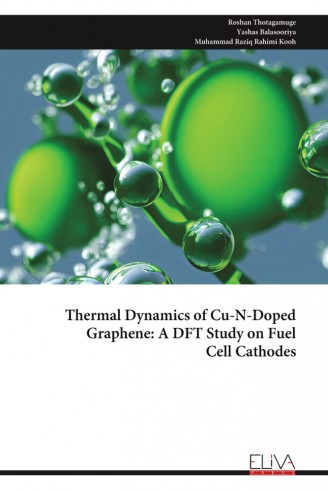
Thermal Dynamics of Cu-N-Doped Graphene: A DFT Study on Fuel Cell Cathodes
€ 42.5
Descripción
Embark on a scientific journey into the world of fuel cell innovation with our research on Cu-nitrogen-doped graphene catalysts. Using cutting-edge density functional theory (DFT) analyses, we investigate the impact of temperature variations on the performance of the novel Cu2-N8/Gr nanocomposite as a catalyst for the oxygen reduction reaction (ORR). Revelation insights at three critical temperatures—298.15 K, 353.15 K, and 393.15 K—under acidic conditions, our analysis of formation energies indicates that the structural stability of the catalyst remains unaffected as the temperature varies within the potential range of 0–7.21 V. Discover the subtle shifts in the stability of ORR steps with temperature fluctuations, exposing intriguing details about the intermediate OH + H2O (*OH + H + *OH). Surprisingly absent are single OH and H2O intermediates during reactions, replaced by the distinctive sharing of a hydrogen atom between dual OH intermediates during the OH + H2O step. Our meticulous free energy calculations shed light on the catalyst's support for spontaneous ORR at all temperatures. Witness the pinnacle of performance at 393.15 K, boasting a maximum cell potential of 0.69 V, while the ebb at 353.15 K records 0.61 V. Notably, the Cu2-N8/Gr catalyst structure showcases reduced H2O2 generation, favoring the formation of dual OH intermediates. In conclusion, at 393.15 K, Cu2-N8/Gr emerges as a frontrunner, outperforming 353.15 K and 298.15 K counterparts—a beacon of promise for ORR catalysis in fuel cell applications. Join us as we explore the dynamic interplay of temperature and catalyst performance, shaping the future of sustainable energy
